LED Street Lights – Design Layout & Buyer’s Guide
The layout of road lighting should be based on nature of the road (brightness & uniformity requirement) and the lighting fixtures (power, lumen output, beam angle, etc). We need to take a comprehensive consideration on the function, aesthetics and the investment cost in order to achieve the best street lighting design. This article is sharing with you the basic and advanced knowledge, as well as how our LED street lights fulfil the requirement of different lighting projects.
Installation Parameters of Street Light Fixture
Generally, the road lighting fixtures are mounted to the protruding arm of the light pole. Let’s firstly have a look at how will we describe the installation height, cantilever length, elevation angle and other parameters.
1. Installation Height of Street Lamp (h)
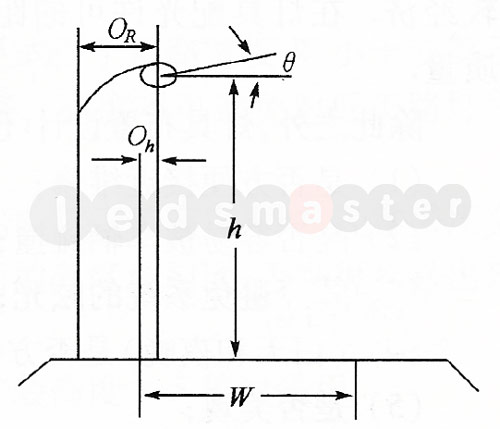 It refers to the vertical distance from the center of the lamp to road surface. The installation height falls within the range of 6 to 14 meters depending on the width of the road. In general, the greater the installation height, the fewer the glare, the better the uniformity, and the wider the spacing between the poles. However, it also means that we will need the luminaries having higher power and lumen output.
It refers to the vertical distance from the center of the lamp to road surface. The installation height falls within the range of 6 to 14 meters depending on the width of the road. In general, the greater the installation height, the fewer the glare, the better the uniformity, and the wider the spacing between the poles. However, it also means that we will need the luminaries having higher power and lumen output.
In the past few decades, the height of the pole gradually increased. This is due to the improvement of the lighting efficiency, says the energy efficiency of LED lights raised from 50 to 130 lm/W. Increasing the pole height not only achieve better uniformity, but it is more economical and beautiful. Majority of the light poles are having the height of 12 meters or more, and multiple lights will be mount to a high mast pole for the highway interchange.
Despite this, sometimes we use very short pole for aesthetic reasons, such as the use of ceiling-mounted garden lights or street lamps (with decorative light poles) in residential area.
2. Cantilever Length of Luminaries (Oh)
It refers to the horizontal distance from the edge of road to the center of light source. Increasing the cantilever length can also increase the brightness of road surface; however, the brightness of sidewalks will be decreased in this case. This parameter affects the lux level on the lane and pavement. If the cantilever length of the lamp post is fixed, we will need to apply asymmetric optics on the street lights to balance the difference.
3. Lamp Elevation Angle (θ)
It indicates the angle between the opening (surface) of the luminary and the horizontal plane. By increasing the elevation angle of the luminary on the light pole, the light can project farther; however, it also aggregates the glare which irritates the pedestrian and drivers. In general, the elevation angle is controlled within 15°.
4. Street Light Spacing
As its name suggested, it refers to the distance between the adjacent lamp post. To decide the best street lighting installation spacing, we need to consider the positioning of the pole, size of road grid (distance between adjacent crosswalk), terrain of the road as well as the surrounding buildings.
Generally speaking, it would be more economical to use the lighting fixtures with high luminous, high installation height and weight installation spacing. To get the better lighting design and layout, the street should be:
i) easy or convenient to access and maintain.
ii) tall enough to avoid the street light is hit by vehicles, and obstructs the growth of trees.
iii) less glare (or even anti-glare).
iv) bright enough to also light up the traffic signs and signals.
v) appearance (to embellish the street).
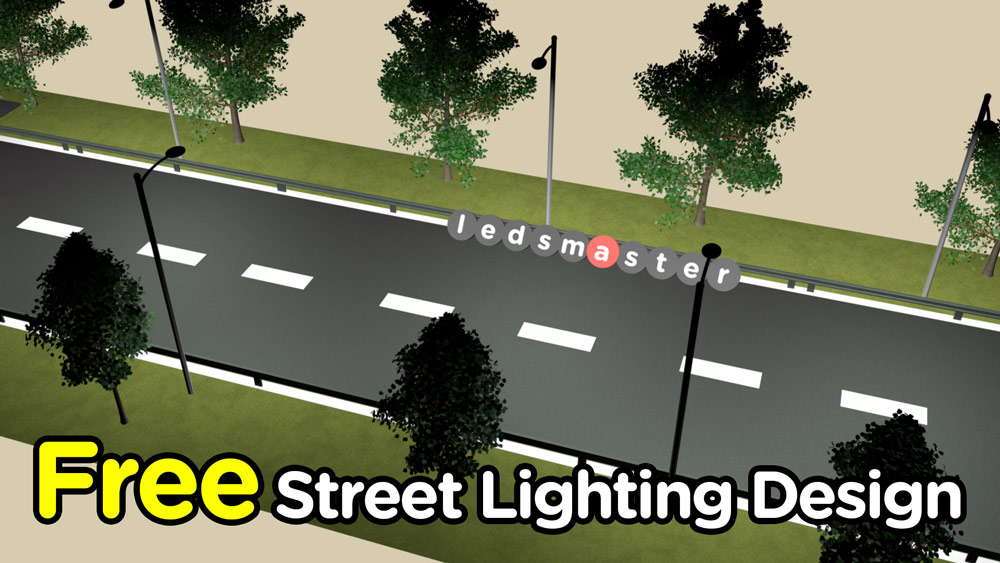
Street Lighting Designs
1. Two-way Traffic Road
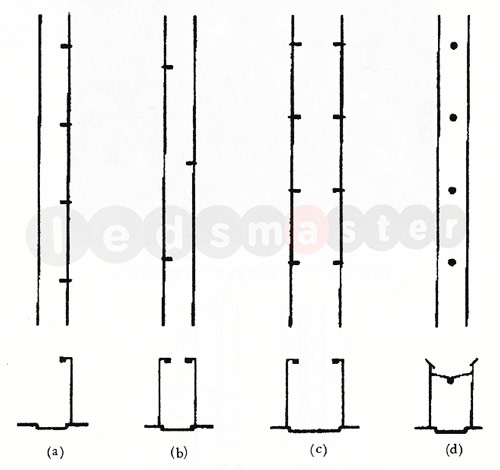 For the two-way traffic roads, there are 4 basic lighting layout arrangement:
For the two-way traffic roads, there are 4 basic lighting layout arrangement:
a) Single-side
This type of lighting is mainly applicable to the case where the road width is less than or equal to the installation height of the lamp. In this scenario, the brightness of the road away from the street side is inevitably lower than the brightness of the road on the side where the street lamp is located.
b) Staggered
It is preferred when the width of the road is 1 to 1.5 times the height of the street lamp installation. When selecting this street lighting design, special attention should be paid to the uniformity; otherwise it is easy to appear light spots with alternating light and dark areas.
c) Double-side (Relative)
It is used when the road width is wider and exceeds the installation height of the lamp by 1.5 times.
d) Hanging
This type of lamp is used on the building facades with very narrow walls on both sides. The luminaries are mounted to the middle of the steel cable.
2. Two-way Lane with Divider
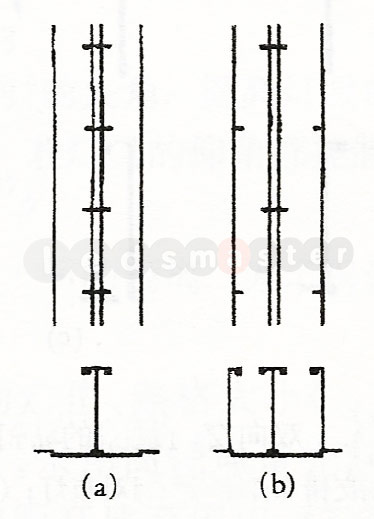 We can find this layout in highways. The central catenary lamp (a) refers to the lamp posts are located to the central isolation belt along the road. The spacing of the lights is about 10 to 20 meters. To further improve the lighting quality, we can use the alternating design as shown in figure (b), as we can also provide illumination for the other sides of the road.
We can find this layout in highways. The central catenary lamp (a) refers to the lamp posts are located to the central isolation belt along the road. The spacing of the lights is about 10 to 20 meters. To further improve the lighting quality, we can use the alternating design as shown in figure (b), as we can also provide illumination for the other sides of the road.
The merits of the central catenary arrangement are:
i) Excellent visual guidance for road users
ii) Good uniformity
iii) Lower Glare
3. Road Intersection
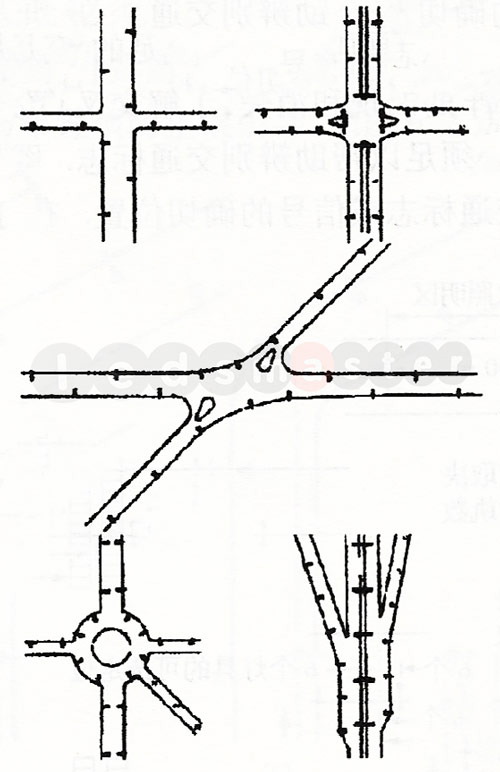 At intersections, roundabouts or ramps, the function of street lighting is preventing the traffic jams and helping the drivers identify the correct exit. The general lighting principles are:
At intersections, roundabouts or ramps, the function of street lighting is preventing the traffic jams and helping the drivers identify the correct exit. The general lighting principles are:
i) Higher lux (brightness) level for intersection
ii) Uses different colors for crossroads illumination (higher contrast)
In the crossroads, it is common to use the 12 to 18 meters pole lights enhance the brightness. For more complex intersections, high mast lighting (over 20 meters height) is often used for illumination.
Compared with general street lighting, high pole lighting has better guiding function, unlike the traditional street lighting blocking the sight.
However, when using the high mast lighting, it is necessary to have a proper lighting plan, such as power, lumen output, elevation angle, uniformity and other parameters.
The concept of high mast lighting is to install numerous of illuminators (like flood lighting fixtures) on a very high pole to provide broad illumination for large area. Since the high poles are installed outside the lane, the maintenance will not affect the traffic. However, the disadvantage of this design is that the light will also be projected outside the area, and thus result in light pollution and wastage of energy. The high mast street lighting can also be applied to spacious plazas, parking lot, square and etc.
Our lighting engineers are eager to provide you with the proper lighting plan for your projects. Contact us today.
4. Curved Road
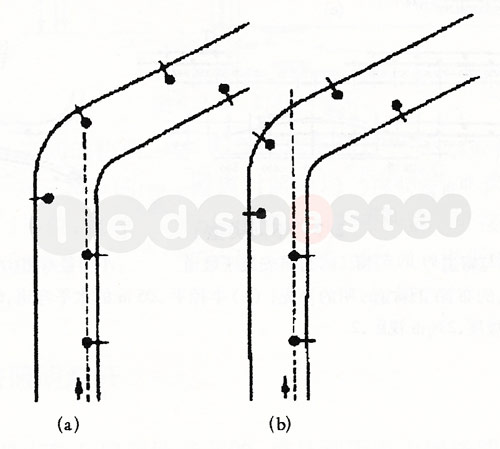 For corners with a large turning radius (>1000m), it can be regarded as a straight road. The street light arrangement does not need special consideration for this situation.
For corners with a large turning radius (>1000m), it can be regarded as a straight road. The street light arrangement does not need special consideration for this situation.
However, for corners with a smaller turning radius and the road width is 1.5 times less than the height of luminary, the street lamps should be located outside the curved road for unilateral lighting as illustrated in the figure. The lighting layout help prevent the drivers from being misdirected. Sometime we will need to adjust the space between the pole for different curvature.
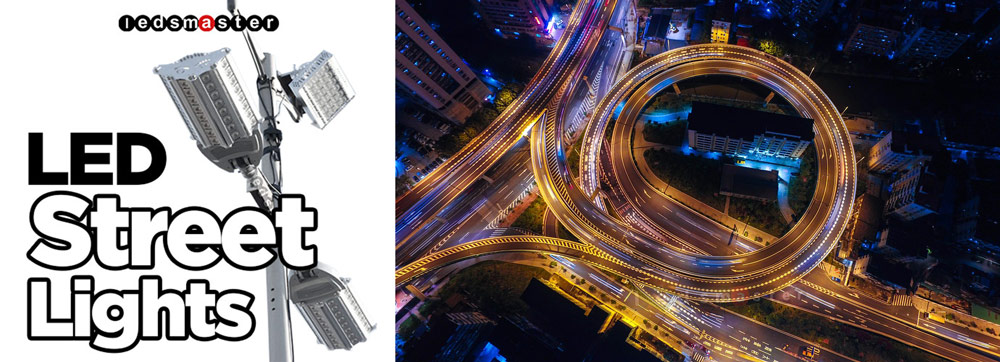
Who are we?
We deliver high quality LED street lights for different types of road, highway, square, alley and etc. To provide the best lighting solution for your project, we also offer free lighting design. Contact us for more information today.